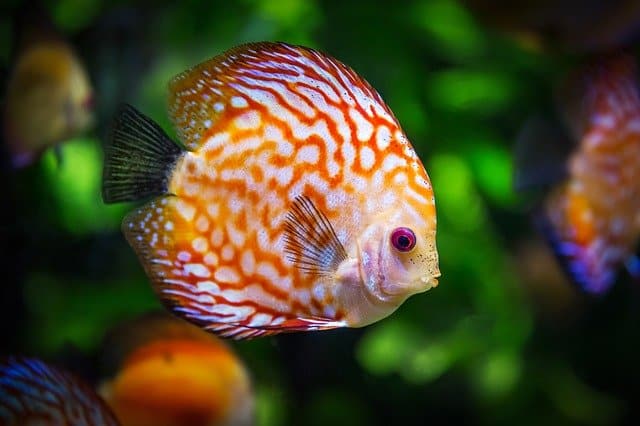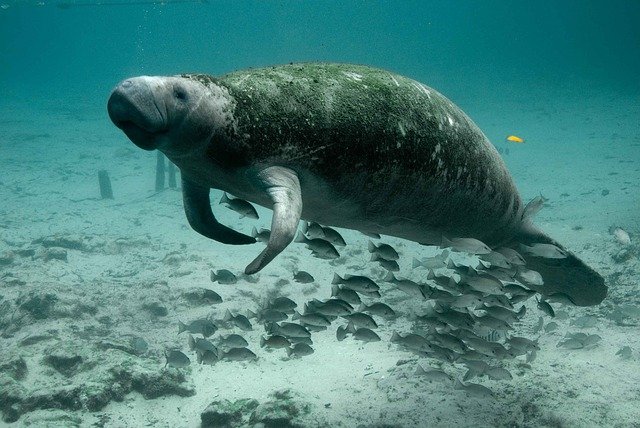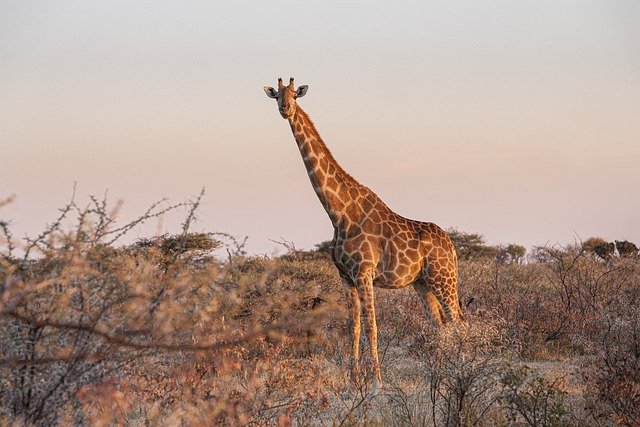Have you ever wondered why some animals don’t have necks? Well, they do have necks, but their heads are attached directly to their bodies.
What animals don’t have a neck?
Here is the List of Animals Without Necks :
- FIsh
- Manatees
- Snakes
The reason behind this is because these animals evolved from fish.
Fish have no neck bones. They have vertebrae instead. Vertebrae are the bony segments that form the backbone of an animal. These vertebrae connect to each other through cartilage, ligaments, muscles, and nerves.
While humans have seven cervical vertebrae (neck bones), sharks only have five. This is because sharks have lost the ability to move their head independently. They also lack the muscles needed to support the neck.
Table of Contents
Animals Without Necks :
Fish

Fish have no neck because they don’t need them. They can breathe through their gills instead of having an external breathing apparatus. Why would anyone want to look like a fish then?
Fish have no neck because they live in water where pressure forces air into their bodies and out their mouths at the same time. This creates enough pressure to prevent water from entering their gill chambers.
In order to survive without a neck, fish have evolved other ways to control blood flow and oxygen intake. Another reason why fish have no neck is because their eyes are positioned on top of their heads and they see the surface above them.
The general anatomy of a fish includes the head, fins, gills, tail, mouth, eyes, and scales. A fish has a brain, which controls all functions of the body. Fish also have a heart, lungs, and digestive system.
Manatees

Manatees are marine mammals that live in warm waters around Florida and other tropical areas. They look similar to sea cows, but they are much smaller and have no dorsal fin.
Manatees do not have necks, they have a long snout which is used for breathing and eating seagrass. They also have webbed feet and tails which help them swim through water.
The Manatees are known to be friendly creatures. They are actually considered part of the order Sirenia, along with elephants and dugongs. Their long snouts give them a unique appearance, but they don’t really have necks.
They are mostly herbivores, feeding primarily on sea grass and aquatic vegetation. They have a distinctive head shape, but their body lacks vertebrae and they lack true necks.
Manatees are large sea mammals found in warm waters around the globe. They can weigh over 2,000 pounds and live up to 50 years. Manatees are also known for their big heads and long necks. While they don’t have teeth or claws, they do have sharp spines along their back.
What do these spines even do?
There are two species of manatee: West Indian manatee (Trichechus manatus) and Amazonian manatee (T. inunguis). Both are listed as vulnerable by the International Union for Conservation of Nature. The West Indian manatee lives primarily in Florida, Texas, Louisiana, Mississippi, Alabama, and Georgia.
The Amazonian manatee is found in Brazil, Colombia, Ecuador, Peru, Bolivia, Paraguay, and Argentina.
While manatees spines are often mistaken for armor, they are actually used for defense. These spines are covered in thick skin and can inflict painful wounds on predators. In addition, manatees are able to regrow them within days.
Snakes

Snakes are often thought of as scaly reptiles with no neck. In reality, they have very complex internal systems that allow them to move their heads independently of each other.
They also possess a highly developed nervous system that allows them to sense danger before it strikes.
Snakes are reptiles that belong to the class Reptilia. They are cold blooded animals that lack limbs and wings. Snakes are found worldwide and inhabit every continent except Antarctica. There are over 2,500 species of snake. Most of them are harmless, but some are venomous.
Read More : Do Snakes Have Backbones ?
How does a snake move its body?
Snakes are reptiles that live mostly in tropical regions. They are cold blooded animals and they don’t sweat or pant.
Their bodies are covered with scales, which act as insulators against heat and water loss. The skin of a snake has two layers, the outer layer is thick and rough, while the inner layer is thin and smooth.
Snakes have four limbs, each limb consists of three segments, the head, trunk and tail. Each segment contains muscles and bones. When a snake moves, these muscles contract and relax, causing the body to bend and straighten.
What Animal has the Long Neck?

Giraffes are known for their long necks, but why exactly does it take them so long to reach the ground?
Giraffes’ necks are so long because they need to reach high branches to eat leaves. The longer the neck, the easier it is for them to reach the higher branches.
Giraffes are herbivores, meaning they eat plants. Their long necks allow them to browse high branches without having to bend down too much. They also use their necks to groom themselves and each other.
There are several theories about why giraffes have such long necks. Some say that it helps them drink water from tall trees. Others believe that it allows them to feed on leaves at higher heights. Still others claim that it makes it easier for them to mate.
What is the anatomy of a giraffe?
Giraffes are tall animals with long necks and legs. They are found in Africa and Asia. Giraffes belong to the family Bovidae and they are herbivores.
The average height of a male giraffe is between 4.5 meters (15 feet) and 6.0 meters (20 feet). Females are smaller at 3.8 meters (12 feet) or less.
The giraffe has become a symbol of power and elegance because of its unique appearance. Its neck is longer than its body length. This makes it look taller than other animals.
The giraffe has a very long neck. The longest recorded neck was measured at 12.1 meters (39 feet), which is almost twice the length of the giraffe itself. The giraffe also has a very long tail. The average tail length is 2.4 meters (8 feet).
Do Dolphins have Necks?

Dolphins are often considered to be intelligent animals, but some scientists say they don’t have necks. Is this true?
Dolphins are known to be very social creatures, and they communicate using various sounds and gestures. They also seem to enjoy playing games with humans.
There are two main theories regarding dolphin neck anatomy. The first says that dolphins lack a neck because their heads move independently from their bodies. This means that they can turn their head 180 degrees without moving their body at all.
The other theory suggests that dolphins have a neck, but it’s hidden under their skin. Their heads would move independently from their bodies due to the flexibility of their skin.
